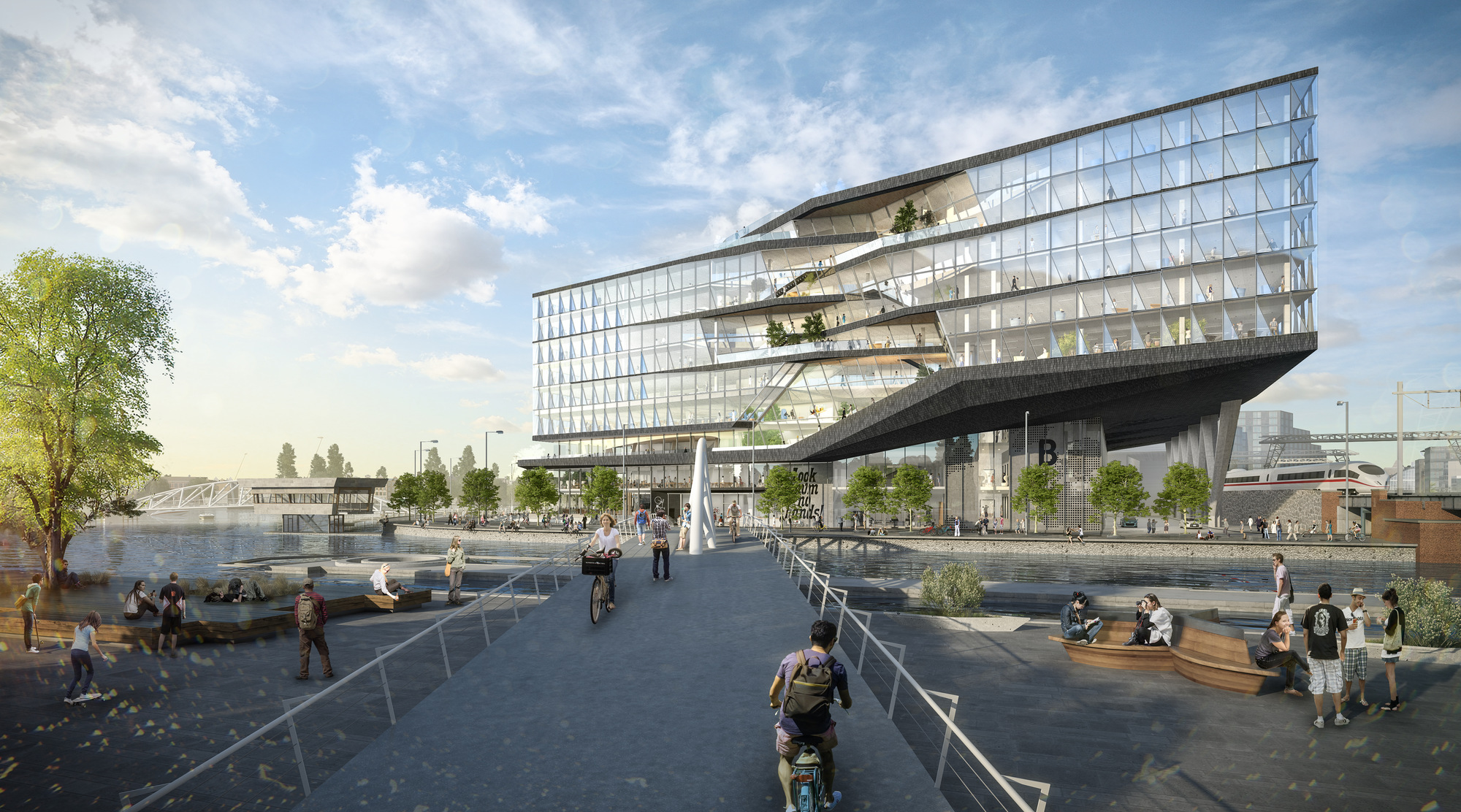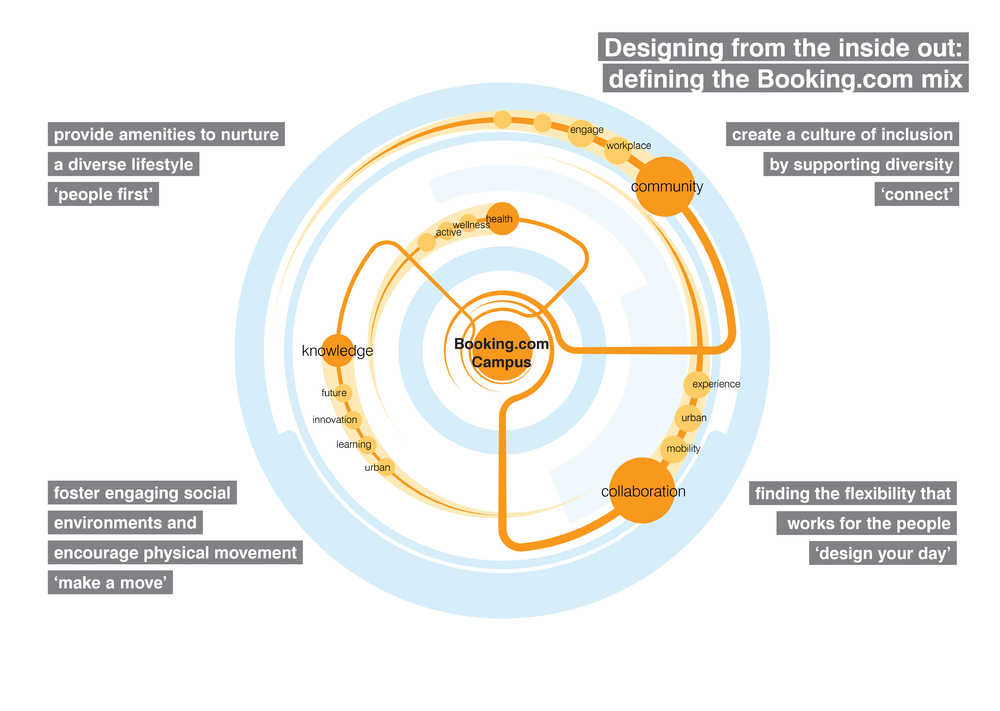

Designing for Amsterdam’s workforce: collaboration, circularity & health
05/03/2019 - Written by Ben van Berkel
"Health is a state of complete physical mental and social wellbeing” WHO
Taking the train east from Amsterdam Centraal to Utrecht (or onwards to Germany) you will pass along the back of the Oosterdokseiland. After the Amsterdam Public Library, V columns zigzag past and glimpses of ongoing construction can be caught. Four arching cranes and whole construction teams putting together our design for the new Booking.com HQ: piece by piece, floor by floor. This new urban campus right in the centre of Amsterdam includes 65.000m2 of office space for the growing Booking.com team, 1.500m2 of mixed use functions along a publicly accessible plinth, and 7.500m2 of living space.
As an architect designing for a company who - not so long ago - were a small start-up, we needed to ask ourselves: how can we architecturally recreate the sense of freedom, comradery, optimism and collaboration once felt when working around a kitchen table? And beyond that, especially as the war on talent wages on, how can we create healthier working conditions for workers who expect their employers to provide them with a good quality of life? What about the tenants and local residents who will use the building for very different reasons? To address these questions, our overarching approach to the project became rooted in a holistic approach to health and wellbeing, with strategies that would address health in all its forms. This included a considered approach to air circulation, water, nourishment, daylight, physical movement, thermal comfort, sound and materials, as well mental wellbeing and social interaction.

Amsterdam is undoubtedly a fantastic place to work. The city itself is an important part of the working identity for companies that call the city home. For this reason, we wanted to invite Amsterdam into the new Booking.com HQ building, inspire the workforce with views across the city, as well as give back to the Amsterdam community. The transparency of the buildings is one such strategy that allows us to do that. The floor to ceiling glass (aside from allowing in daylight and reflecting the water around it) creates a building that is almost completely transparent; Amsterdammers can get a glimpse of life inside the building, while the workforce can visually connect with the city around them. Due to its location at the very tip of the Oosterdokseiland, the office building enjoys an almost panoramic view of the city around it. This transparency even becomes permeability through a plinth that provides public functions and accessible open spaces, inviting Amsterdammers into an area with restaurants, cafes, and informal places to meet, socialize and work.
Millennial and Gen Z employees are especially driven to contribute positively and collectively to the world they live in. They have an ambition to realize their potential as individuals, and to better society as a whole. As such, the working environments they use should increase opportunities to share knowledge, work collaboratively and also work sustainably. The circulation within the Booking.com HQ building has been designed to include a host of meeting spaces that allow for co-working, co-creation and ideation in formal or informal settings. Physical movement is actively encouraged throughout the building, with connections and meeting points dotted around the campus for intuitive wayfinding. As for sustainability, circularity was a top priority for the developers BPD, for Booking.com and for us. Together we received a BREEAM Excellent design certificate for the project. The building manages waste in a smart way, and incorporates connections to nature with biophilic design elements that increase air quality and wellbeing. Beyond material use, circularity also means designing as flexibly as possible to provide for new uses in the future, developing renewable energy strategies, and using technology to regulate climate and daylight within the building itself.